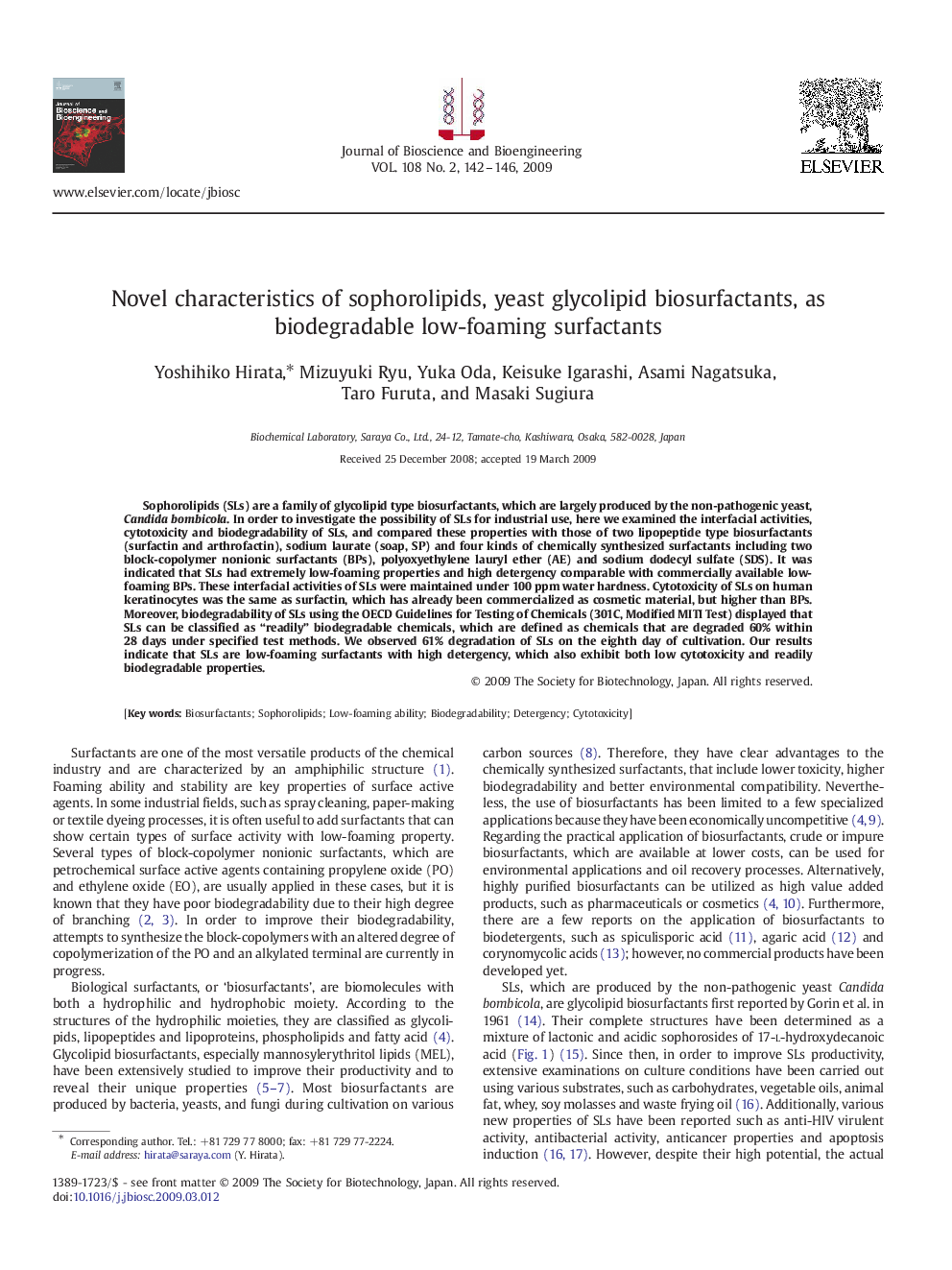| Article ID | Journal | Published Year | Pages | File Type |
|---|---|---|---|---|
| 22062 | Journal of Bioscience and Bioengineering | 2009 | 5 Pages |
Sophorolipids (SLs) are a family of glycolipid type biosurfactants, which are largely produced by the non-pathogenic yeast, Candida bombicola. In order to investigate the possibility of SLs for industrial use, here we examined the interfacial activities, cytotoxicity and biodegradability of SLs, and compared these properties with those of two lipopeptide type biosurfactants (surfactin and arthrofactin), sodium laurate (soap, SP) and four kinds of chemically synthesized surfactants including two block-copolymer nonionic surfactants (BPs), polyoxyethylene lauryl ether (AE) and sodium dodecyl sulfate (SDS). It was indicated that SLs had extremely low-foaming properties and high detergency comparable with commercially available low-foaming BPs. These interfacial activities of SLs were maintained under 100 ppm water hardness. Cytotoxicity of SLs on human keratinocytes was the same as surfactin, which has already been commercialized as cosmetic material, but higher than BPs. Moreover, biodegradability of SLs using the OECD Guidelines for Testing of Chemicals (301C, Modified MITI Test) displayed that SLs can be classified as “readily” biodegradable chemicals, which are defined as chemicals that are degraded 60% within 28 days under specified test methods. We observed 61% degradation of SLs on the eighth day of cultivation. Our results indicate that SLs are low-foaming surfactants with high detergency, which also exhibit both low cytotoxicity and readily biodegradable properties.
